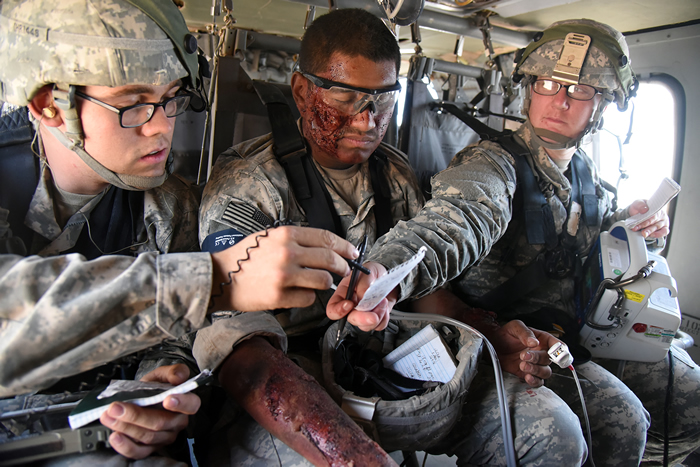Army Evaluates Transport Telemedicine Technology

The U.S. Army Medical Materiel Agency's Integrated Clinical Systems Project Management Office, in collaboration with the U.S. Army Aviation and Missile Command's Program Executive Office for Aviation, performed a demonstration of a new prototype of a transport telemedicine technology at Fort Bliss, Texas, Oct. 2.
The prototype is part of the Enhanced Mid-tier Air/Ground Network, or eMAGINET, capability.
With desert sands swirling in every direction, two Army medics loaded a "casualty" into a Black Hawk helicopter before jumping in and taking off into the skies above White Sands Missile Range, New Mexico. The medics immediately triaged their "patient" and initiated a mobile electronic medical record using the prototype telemedicine system placed on board for the demonstration. During transport, the technology automatically added information such as vital signs data to the patient's record of care. The data then automatically transmitted to a medical company on the ground, which kept the receiving medical team updated and ready. Collecting, documenting and sharing patient data with other providers is a critical component of health care from the point of a battlefield injury back to a fixed facility.
"Currently, when a Soldier is wounded on the battlefield, there is no tool that allows the medic to start an electronic record of care," explained USAMMA Transport Telemedicine Product Manager Charles Paschal.
Telemedicine is not a new concept for the military or civilian sector. Within hospitals and clinics, health care providers have been using audio and video conferencing, as well as other technology, to share patient information and make collaborative care decisions.
Transport telemedicine is a platform and process for documenting pre-hospital care and providing situational awareness of incoming patients. A key part is connecting the culture with the technology, according to Paschal. Some health care providers may perceive a telemedicine tool as a burden rather than a resource if it creates additional workload. However, the technology should integrate smoothly with existing systems and processes.
Development of the Transport Telemedicine technology began in 2008 as a Congressional Special Interest Research Program.
"This program is still in advanced development. The team plans to continue to review and refine the technology, based on feedback from these types of exercises," said Paschal. "With each demonstration, we learn more and are able to refine this prototype technology, but we also stay flexible and have our eye on future operations as well."














